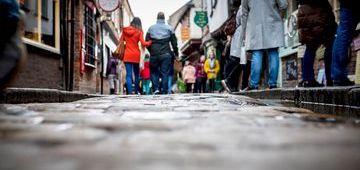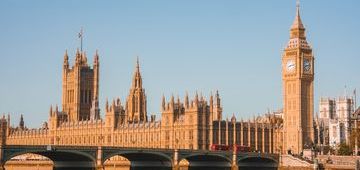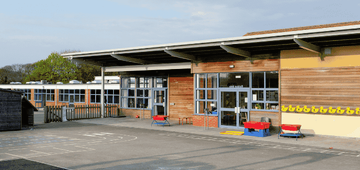
Lars Münter and Professor Lisa Ackerley explore how hygiene practices could be revolutionised as a result of the Covid-19 crisis.
Lars Münter is an Administrative Director for the Danish Council for Better Hygiene and Head of the International Projects Unit in the Danish Committee for Health Education and Professor Lisa Ackerley is a Chartered Environmental Health Practitioner, Independent Food Safety Advisor, visiting Professor at University of Salford and Food Safety Advisor to UK Hospitality.
Covid-19 exposes many challenges from health care to infectious disease control. But it also highlights the need for a hygiene strategy and design revolution of the public sphere that can slow or stop future calamities at home, in workplaces and transport.

Could’ve, would’ve, should’ve. The Holy Trinity of Regret. Or the glaring light of hindsight. We humans have several ways of describing situations where good thinking could have made a difference. The Covid-19 crisis is no different.
But a distinguishing element of Covid-19 from other types of crises or disasters is the fact, that epidemics and infections was, is, and will never be Black Swans. A Black Swan is an unpredictable event, but as with seasonal flu, colds and Norovirus as frequent houseguests and our millennia of experience with pandemics, we had ample chance to read the writing on the wall.
So there are obviously lessons to be learned – and you’ve probably read articles collecting facts and tools into lessons learned; like these 10 from The Guardian.
We would argue that many of these fail to identify the elementary reason why Coronavirus has been able to spread too easily, which is simply because we have a society that makes life easy for infectious diseases. And while we honour and celebrate (or conversely even revile) the myth of modern cleanliness and hygiene, in effect we still have much to do and implement, before we could tick this box.
Disagree? If workplaces, schools, transport systems and public events all had to be closed to stop the virus and rebuilt for reopening, then one could argue that we hadn’t designed these venues and spaces adequately in the first place.
So maybe now, is the time to use our knowledge about how hygiene could feature more in future design? And if so, what would that world look like?
Workplaces with safety?
Safe workplaces should be a given, but employers seem to have missed, that humans are, well, human. As well as being productive and creative, we have human needs and human capacities. All future workplaces could focus on traditional and new hygiene measures.
This includes not allowing workers to attend work if they are ill and ensuring fair sick pay. How can we encourage workers to wash their hands when they arrive at work? Office toilets need to be reviewed in terms of access, egress, numbers, cleaning, and design. Automatic flushing and no-touch taps, soap and towel dispensers and no-touch doors could also help.
Is the final kiss of death to open plan offices that disease may travel faster in such an environment? Maybe. Targeted cleaning at the office will focus on frequently used surfaces and hand touch sites.
Shopping with safety?
Clearly there’s a hygiene element in shopping – we’re close, we’re touching objects, we’re human. Coronavirus has encouraged online shopping and may cause the further decline in the high street experience. For stores, ensuring distancing, cleaning and disinfection, and insisting on customer hand hygiene would become the new normal. Hand disinfectant yes – but what about hand wash stations at the entrance?
We foresee the use of the sanitised shopping trolley rather than baskets to ensure groceries are kept away from the floor. 'Click and collect' has also proved to be helpful to those who don’t want to enter the store at all.
Transport with safety?
Airports with access to handwashing? Mandatory use of face coverings for public travel? Fewer seats per row, even Perspex screens between seats? Some temporary air travel measures might become permanent fixtures. Why? Well, because jamming a lot of people in tight spaces for hours on end increases the risk of transmission of many diseases. And just as you want your travellers to not crash, safety these days means being safe from infectious diseases too.
Obviously, travel plays a part in the spread of a pandemic, but the logical conclusion isn’t to shut it all down. It is to redesign airports and train stations, airplanes, seats and queuing with better access to hand hygiene, fewer contact points, better cleaning, more spacing, logical sequencing of boarding and deplaning
Schools and education with safety?
Ever noticed videos across social media and news sites about correct exit procedure following plane crashes? Oh, you knew the procedure already… then how come news sites suddenly exploded with videos about (correct) hand hygiene? Because people needed to know. We need to start educating and training for hygiene and infection prevention just as fire drills and traffic safety. Repeatedly. Ensuring an annual training session. And mandatory hygiene in the curriculum (can be very fun too). We need to design schools with adequate access to basins and toilets to both train safety measures and build a culture of hygiene. This involves teachers understanding the importance of group dynamics & measures; politicians and planners to invest in building health literate and resilient cultures.
In a way, this is the time to put the clock back to the pre-antibiotic age, where we had to be more hygienic or risk death. Remind you of anything?
Cities with safety?
Urban design in the 20th century is/was shaped by both cholera, war, and terrorism. Urban design in the 21st century will in turn be shaped by Coronavirus and climate. More space, wider doors, automatic doors, more walking and cycling, more green areas, improved public bathrooms and basins, staggered commuting in agreement with local businesses and workplaces (and staggered prices on public transport). A point one of us has already argued in an article for the International Federation for Housing and Planning.
Inspections and Audits
Already, enforcement has had to take a step back from the premises literally, with officers in the UK discussing control measures with businesses remotely, and accreditation bodies considering how to carry out virtual inspections using technology, including live video where the operator takes the auditor on a virtual tour. Documentation can become electronic and in real-time to allow critical analysis of data without so much of a need to be physically present. And documentation could be ensured via extended use of sensors and the Internet of Things (IoT).
There may be businesses who will take advantage of this, and the threat of fraud is ever present, but these new ways could supplement old-style audits in future.
Visions for the future
As we all know, it’s tricky for an old dog to learn new tricks. But just as cholera reshaped cities and urban design 100 years ago, the combination of Coronavirus and climate (and with antibiotic resistance lurking in the background) will likely be a defining moment for redesign of cities, gizmos, and cultures.
The International Scientific Forum for Home Hygiene outlined a vision for the future of hygiene in 2018, stressing that the burden of infectious diseases is a collective challenge. This was all too true, but we would do well to finally embrace infection prevention practices in design, planning, and investments. Also relevant is the RSPH report “Too Clean or Too Clean” about targeted hygiene.



